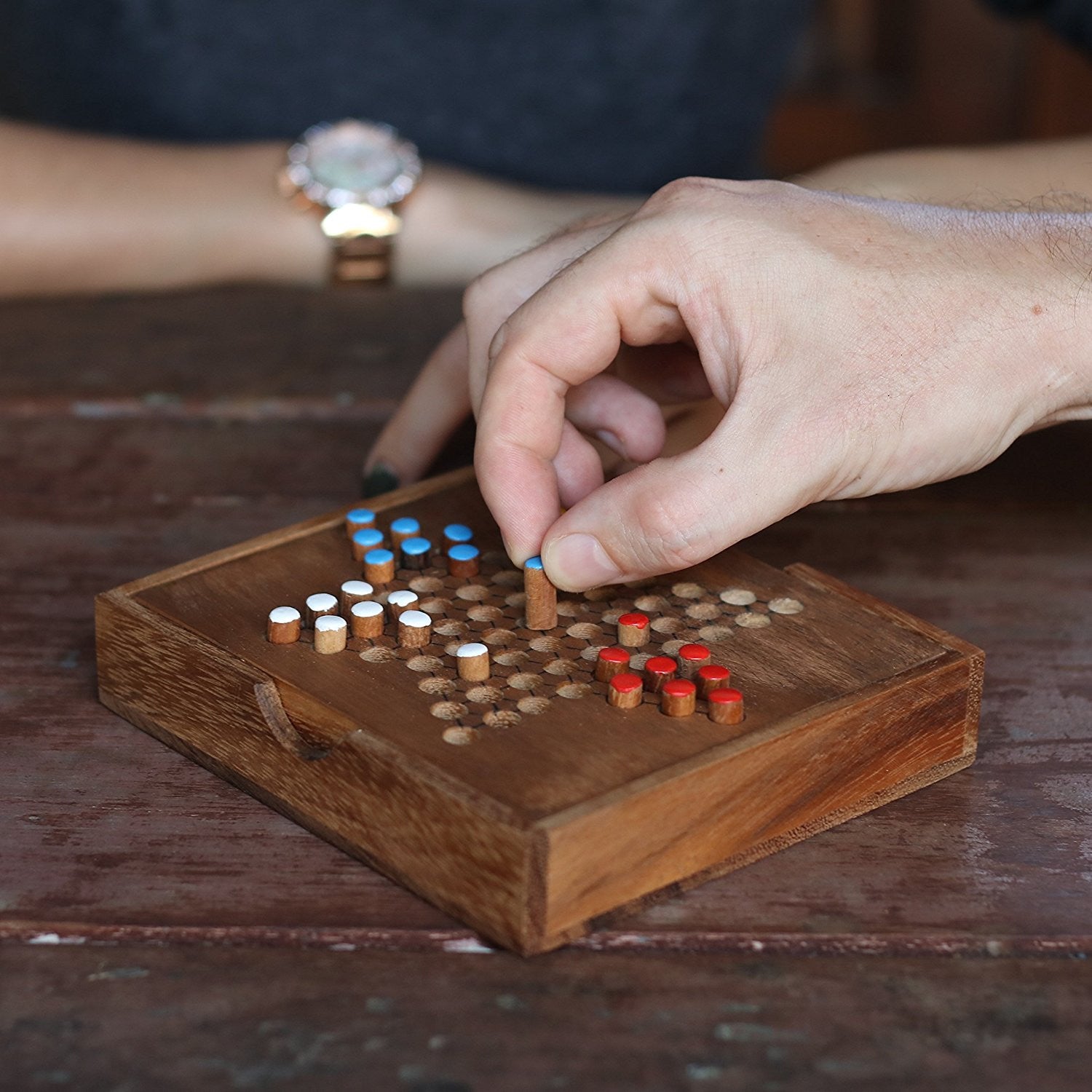
You can jump over just one piece, or, if luck and the board permits, jump over multiple pieces if they are lined up accordingly.Īs you are moving your pegs across the game board, Chinese checkers rules permit you to move your pegs into any available spaces, including those in other people’s home triangles that are not your final destination. If you jump over another players peg, an open, unoccupied space must be on the other side for you to fill. They can either be moved into an empty hole that is directly adjacent to the hole that it is currently occupying or, once yours and your opponents’ pegs are out on the board you have the option to jump over them. Allow the youngest person in the group to start first by moving a single peg from their home triangle onto the board, then the rest of the players follow suit. The main goal of Chinese checkers is to move all ten of your colored pegs from your home triangle across the board, filling up the triangle that is directly across from you. In the event you are playing with two players, Chinese checkers rules require that you use the points that are exactly opposite of each other on the game board. If you have decided to play with three players, you will want to use triangles that are equal distances from each other. Have each person take their ten pegs (or marbles) and fill each of the holes in the home triangle that they have selected to use.
#Chinese checkers rules how to
It was originally created in Germany in 1893 as a variant of an older American game called Halma.įor those new to the game and wondering how to play Chinese checkers, it all begins by having each player select a corner of the board and a marker color to use. The funny thing about this game is that it was not made in China. Played on a standard Chinese checkers board that resembles a six-pointed star, this game relies mostly on strategy and quickness of forethought. In this game, kids also learn to strategize, plan and compete in a healthy way.An engaging and more strategic version of the standard checkers game, the rules for Chinese checkers are a bit different but are easily learned. The game of Chinese Checkers is a great entertaining game that provides space for social interaction while developing logic skills and critical thinking skills in children. Other players can block these paths by placing their pegs and hindering movement of other player along these paths. The players strategize to build a long hopping path from their starting point to their home. The player may choose not to jump over certain pegs even if he/she has the choice and can bring his/her turn to end. In a turn, players move a single peg of their color to its adjacent hole or jumps over any peg to a vacant hole directly beyond it. The youngest player usually begins the game and the other players take their turn in a clockwise direction. He/She arranges all the 10 pegs in the holes of the corresponding triangle. To play the game, each player decides a color. The destination triangle is called ‘home.’ The objective of the game is to be the first players to move all the 10 pegs across the opposite triangle by jumping over other pieces. The whole star shaped board is filled of holes each connected with straight lines to its adjacent holes. The interior of the board is a hexagon with five holes on each side. Each triangle is of a different colour and there are six sets of ten marbles/pegs with corresponding colours of the triangle.


Each point of the star is an equilateral triangle consisting of ten holes (four holes on each side).

The Chinese Checker board is in the shape of a six pointed star. Nevertheless, though this game did not originate in India, it is widely played by urban Indian kids since generations. However, many historians dispute the fact that the game originated in Germany and believe that it originated in United States itself.

This game was invented in Germany as Halma, and later, the simplified version was named as Chinese Checkers in United States. Chinese Checkers is strategy board game played by 2 – 6 players and is best enjoyed by kids aged 7 years and above.


 0 kommentar(er)
0 kommentar(er)
